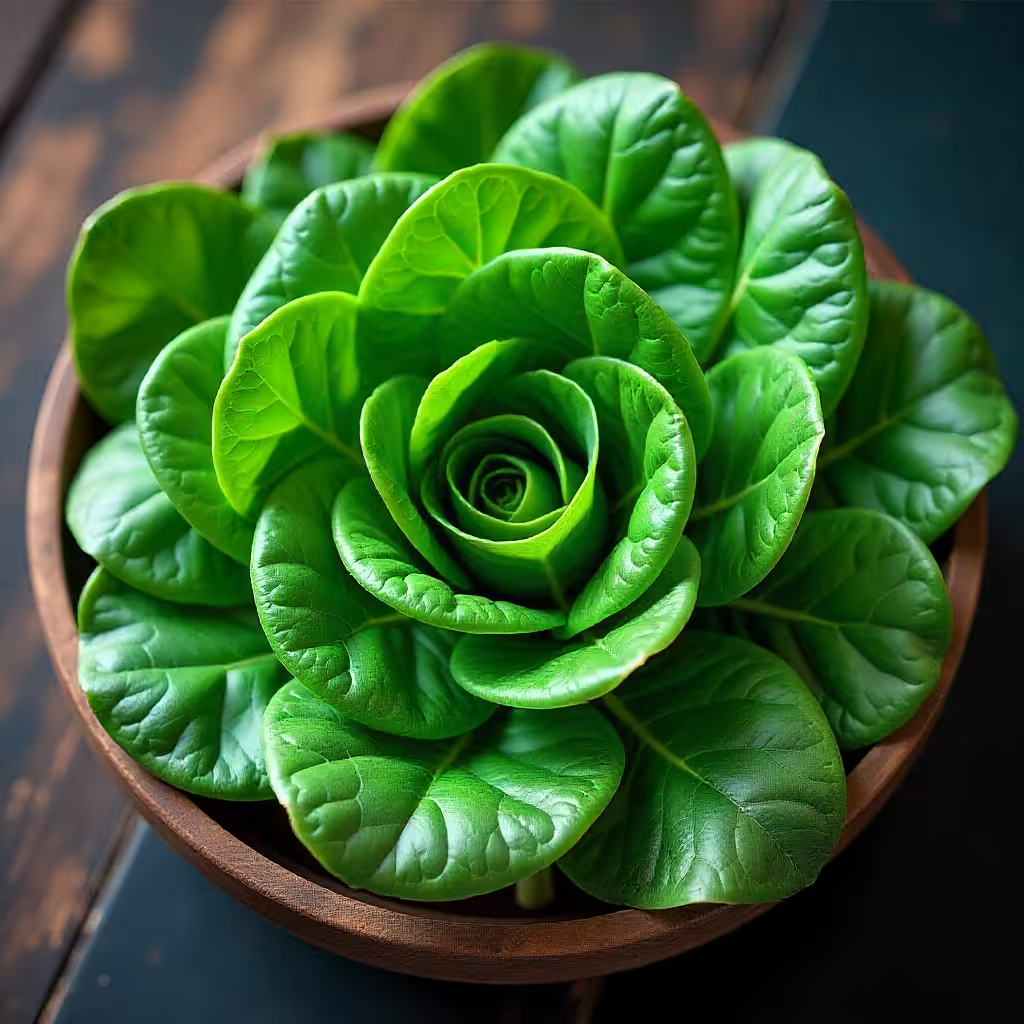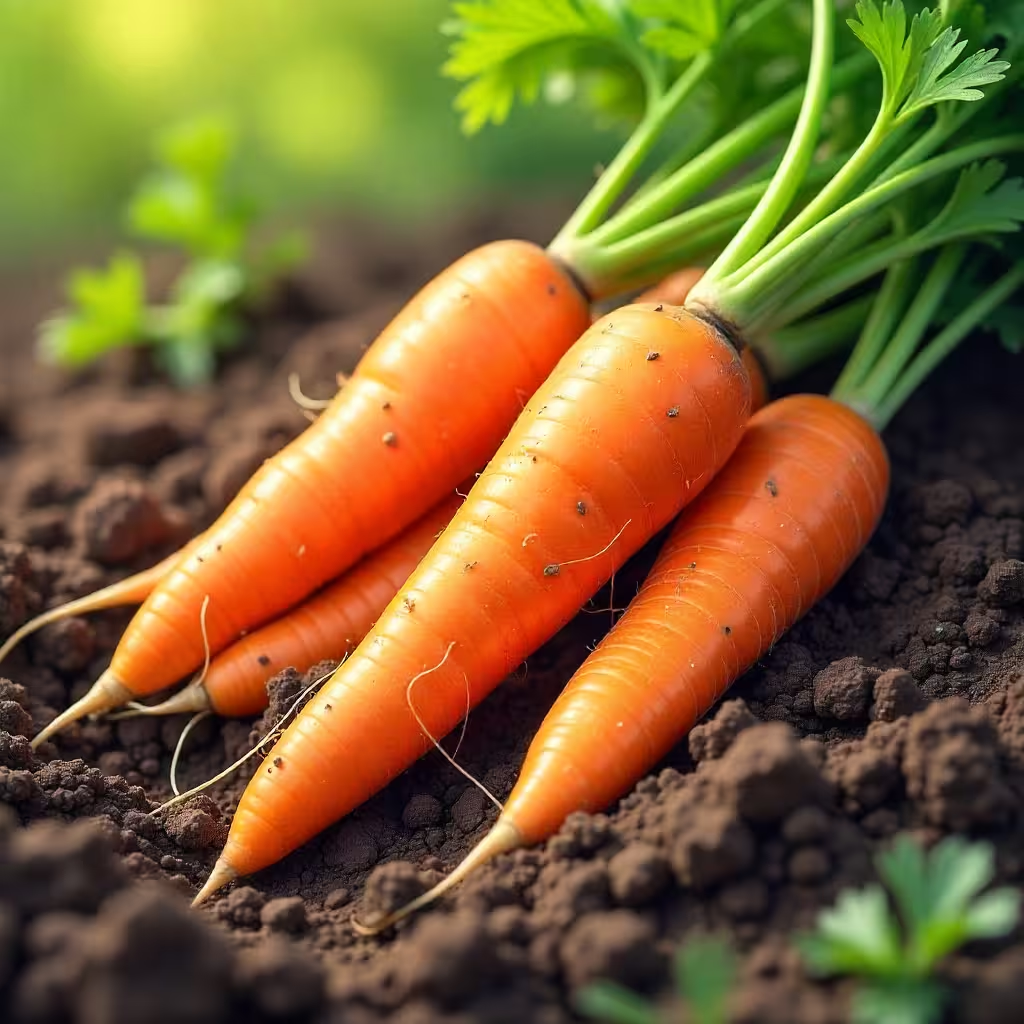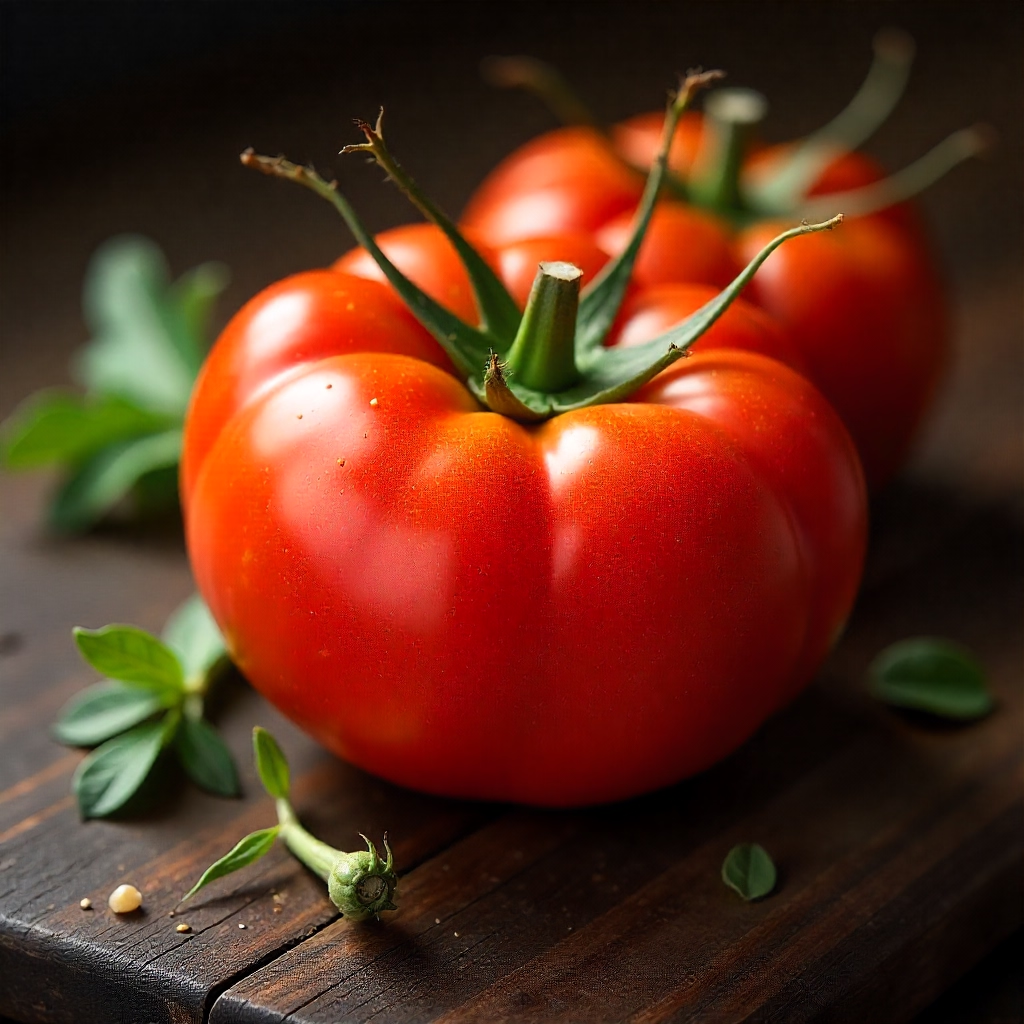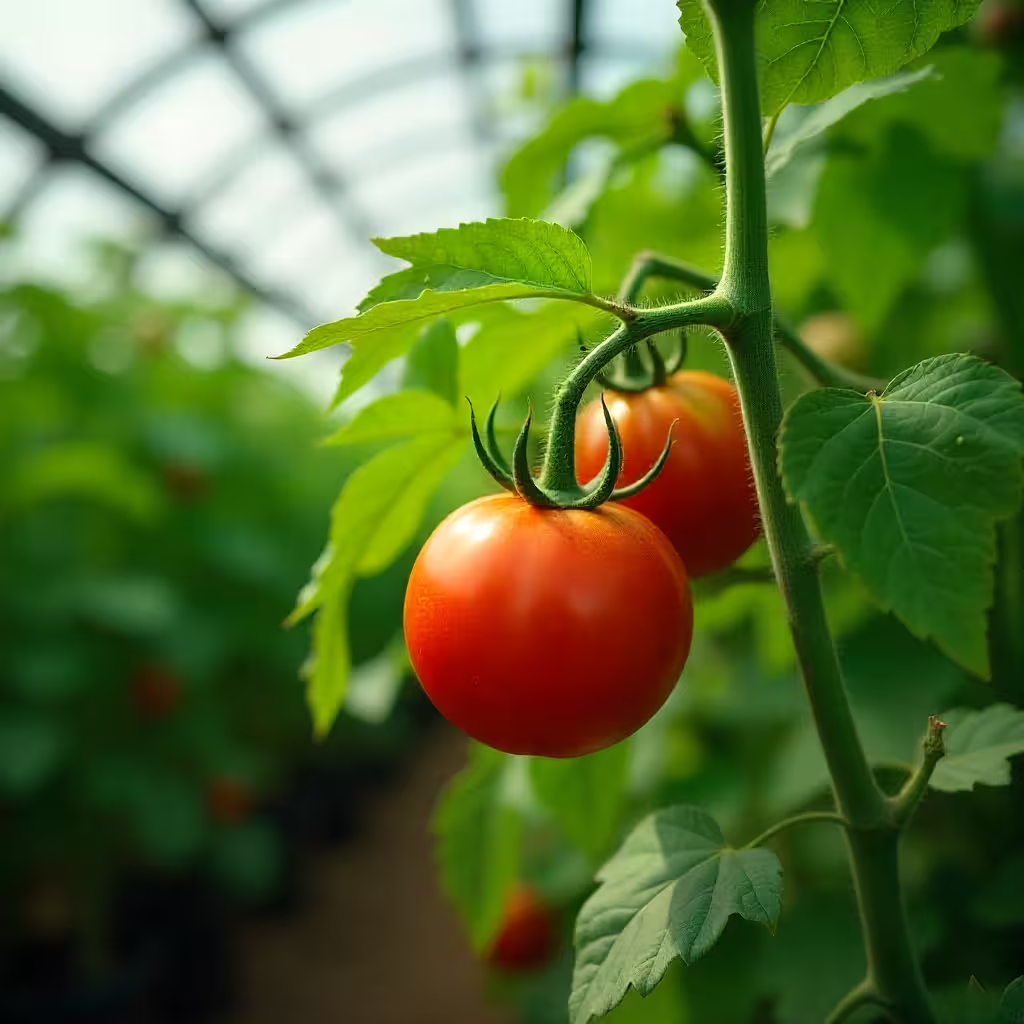Tomatoes: The Heart-Healthy Brain Protector
Tomatoes offer extraordinary benefits for brain health, primarily through their rich content of lycopene, a powerful carotenoid antioxidant that crosses the blood-brain barrier and provides direct neuroprotection. This vibrant red compound, which gives tomatoes their distinctive color, has been extensively studied for its ability to protect brain cells from oxidative damage, reduce neuroinflammation, and potentially lower the risk of neurodegenerative diseases including Alzheimer's and Parkinson's disease. Research demonstrates that individuals with higher blood lycopene levels show better cognitive function and reduced rates of cognitive decline as they age, making tomatoes a crucial food for maintaining mental sharpness throughout life.
The brain-protective mechanisms of lycopene are multifaceted and profound. As one of the most potent antioxidants found in food, lycopene neutralizes free radicals that cause oxidative stress in brain tissue—a primary factor in neurodegeneration and age-related cognitive decline. The brain is particularly vulnerable to oxidative damage because it consumes approximately 20% of the body's oxygen while being rich in fatty acids that are susceptible to oxidation. Lycopene specifically protects the polyunsaturated fatty acids in neuronal membranes, preserving the structural integrity of brain cells and maintaining efficient signal transmission between neurons. Studies have shown that lycopene supplementation can reduce markers of oxidative stress in the brain and improve memory performance in both animal models and human trials.
Tomatoes' contribution to brain health extends beyond lycopene to include their substantial vitamin C content, with one cup of cherry tomatoes providing about 25% of daily needs. Vitamin C is essential for the synthesis of neurotransmitters, particularly norepinephrine, which affects attention, perception, motivation, and arousal. This water-soluble antioxidant also regenerates other antioxidants like vitamin E, creating a protective network throughout the brain. Additionally, vitamin C supports the formation and maintenance of myelin, the protective sheath around nerve fibers that enables rapid signal transmission, and its deficiency has been associated with cognitive impairment and increased dementia risk.
The anti-inflammatory properties of tomatoes play a crucial role in brain protection, as chronic neuroinflammation is increasingly recognized as a major contributor to cognitive decline and neurodegenerative diseases. Compounds in tomatoes, including lycopene and various flavonoids, inhibit inflammatory pathways in the brain and reduce the production of pro-inflammatory molecules. Research has demonstrated that regular tomato consumption is associated with lower levels of inflammatory markers that are linked to cognitive decline. The potassium in tomatoes—approximately 290 mg per medium tomato—supports brain function by maintaining proper fluid balance and facilitating electrical signal transmission between neurons, which is fundamental to all cognitive processes including thinking, memory, and learning.
Tomatoes also contain folate, which works to reduce homocysteine levels in the blood. Elevated homocysteine is toxic to brain tissue, causing damage to blood vessels in the brain and increasing the risk of stroke, vascular dementia, and Alzheimer's disease. By helping to metabolize homocysteine, the folate in tomatoes protects brain vasculature and maintains healthy blood flow to neural tissues. Furthermore, the various carotenoids in tomatoes beyond lycopene—including beta-carotene, lutein, and zeaxanthin—accumulate in brain tissue where they provide additional antioxidant protection and support cognitive function. Fascinatingly, cooking tomatoes actually increases the bioavailability of lycopene, with tomato sauce, paste, and cooked tomatoes providing significantly more absorbable lycopene than raw tomatoes. When consumed with healthy fats like olive oil, lycopene absorption increases dramatically, making Mediterranean-style tomato dishes particularly beneficial for brain health. Long-term studies have shown that people who regularly consume tomato products have better-preserved cognitive function and lower rates of dementia compared to those who rarely eat tomatoes.
Featured Content
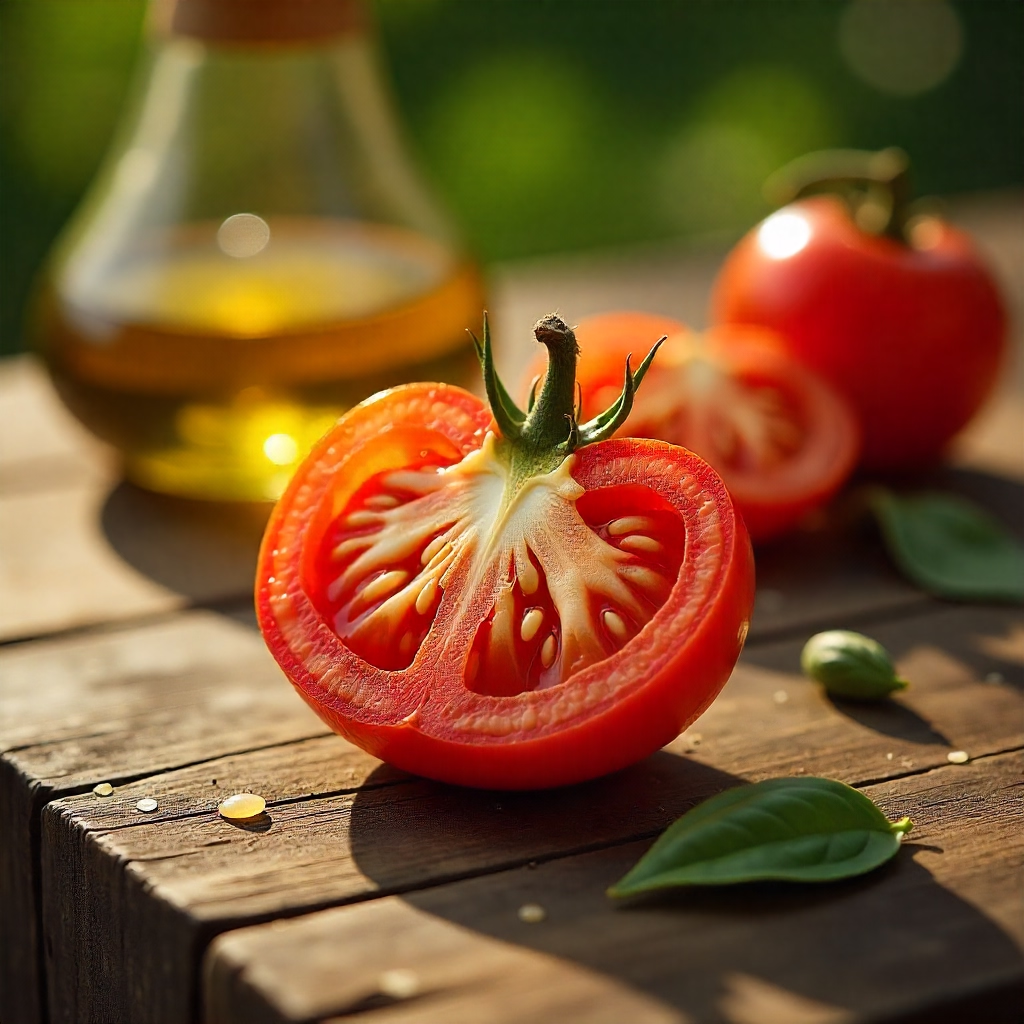
Tomatoes are among the most versatile ingredients in global cuisine, prepared in countless ways that enhance both flavor and nutritional benefits. Fresh tomatoes are enjoyed raw in salads, sliced for sandwiches and burgers, or eaten whole as healthy snacks, providing maximum vitamin C while offering good lycopene content. Cooking tomatoes dramatically increases lycopene bioavailability—roasting, sautéing, stewing, and making sauces all break down cell walls and release more lycopene for absorption. Tomato sauces form the foundation of countless dishes worldwide, simmered with herbs, garlic, and olive oil to create flavorful bases for pasta, pizza, stews, and curries. Sun-drying concentrates tomato flavors and nutrients, creating intensely flavored products popular in Mediterranean cooking and beyond. Roasting tomatoes at high heat caramelizes their natural sugars while concentrating lycopene, creating rich, sweet flavors perfect for sauces and soups. Tomato paste and purée provide concentrated sources of lycopene and are used globally to add depth and nutrition to dishes. Fresh tomato salsas, chutneys, and relishes accompany meals across cultures, while tomato juice and gazpacho offer refreshing ways to consume this brain-healthy food. Canning tomatoes preserves their peak-season nutrition for year-round use, with properly canned tomatoes retaining most of their beneficial compounds. Grilling tomatoes adds smoky complexity while maintaining nutrients, and stuffing tomatoes with grains, vegetables, or meat creates complete meals. The key to maximizing brain benefits is pairing tomatoes with healthy fats—olive oil being ideal—which dramatically increases lycopene absorption, making dishes like tomato sauce with olive oil particularly beneficial for cognitive health.
Additional Insights

Tomatoes have become absolutely essential to African cuisine across the entire continent, so thoroughly integrated that they're now considered indispensable in most regional cooking despite being introduced only a few centuries ago. In West Africa, tomato-based stews form the backbone of daily meals—Nigerian tomato stew combines tomatoes with peppers, onions, and spices to create vibrant red sauces that accompany rice, yam, or plantain, while Ghanaian light soup features tomatoes as the primary ingredient alongside fish or meat. Tomato paste is particularly valued throughout West Africa, added generously to enhance flavor, color, and thickness of stews and soups. East African cuisine relies heavily on fresh tomatoes, with Kenyan and Tanzanian cooks preparing tomato-onion bases for virtually every main dish, from bean stews to meat curries. Kachumbari, a fresh tomato-onion salad with chili and lemon, appears throughout East Africa as a cooling accompaniment to grilled meats and starchy foods. North African cuisines showcase tomatoes in tagines, couscous dishes, shakshuka (eggs poached in spicy tomato sauce), and various vegetable preparations influenced by Mediterranean traditions. South African cuisine incorporates tomatoes into traditional stews, curries reflecting Indian influence, and increasingly in fresh salads and Western-style preparations. African markets are defined by pyramids of fresh tomatoes in varying stages of ripeness, with experienced vendors expertly selecting tomatoes based on customers' cooking timelines—red for immediate use, orange for tomorrow, green for next week. Many African countries have developed tomato processing industries producing paste, canned tomatoes, and sauces, though fresh tomatoes remain preferred for most home cooking, valued for their flavor and the control they provide over dish consistency.
In-depth Analysis
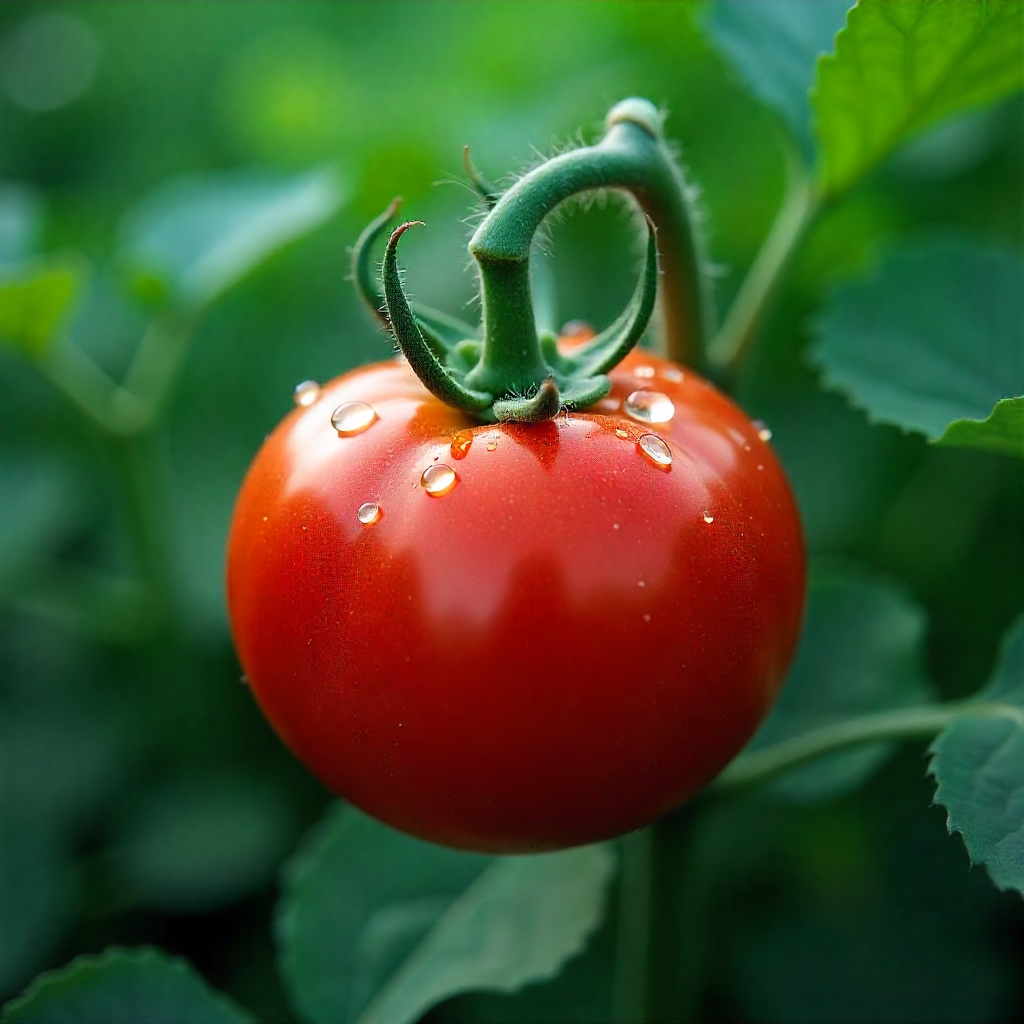
Canada has embraced tomatoes as a dietary staple, consuming them fresh, processed, and in countless prepared foods throughout the year. Fresh tomatoes are available year-round in Canadian supermarkets, with greenhouse-grown varieties from domestic producers like Ontario and British Columbia supplementing imports during winter months. Canadians show strong preference for fresh tomatoes in summer, particularly heirloom varieties and locally grown tomatoes from farmers' markets that offer superior flavor compared to winter imports. Fresh tomato salads, including Caprese salad with mozzarella and basil, are extremely popular in Canadian restaurants and homes, especially during peak summer season. Canadian cuisine reflects the country's multicultural nature in tomato usage—Italian-Canadians prepare traditional marinara and pizza sauces, South Asian Canadians make curry bases with tomatoes, Chinese-Canadians use tomatoes in stir-fries, and Portuguese-Canadians prepare seafood stews rich with tomatoes. Tomato-based soups, particularly tomato soup served with grilled cheese sandwiches, represent classic Canadian comfort food, especially popular during cold winters. Ketchup holds special significance in Canadian culture, with many households maintaining strong brand preferences, and it's consumed in larger quantities per capita than in most countries. Home canning remains a cherished tradition among many Canadian families, particularly those with European heritage, who preserve summer tomato harvests as sauces, whole tomatoes, and salsas for winter use. Urban Canadian gardening enthusiasts prioritize tomatoes as their most desired homegrown crop, with numerous cold-hardy varieties developed specifically for Canada's shorter growing season. Health-conscious Canadians increasingly understand tomatoes' nutritional benefits, particularly lycopene's role in heart and brain health, driving consumption of tomato-based products. Canadian restaurants showcase tomatoes in diverse ways reflecting the country's multiculturalism, from Italian trattorias serving fresh tomato bruschetta to Mexican restaurants preparing fresh salsas daily.
Key Highlights
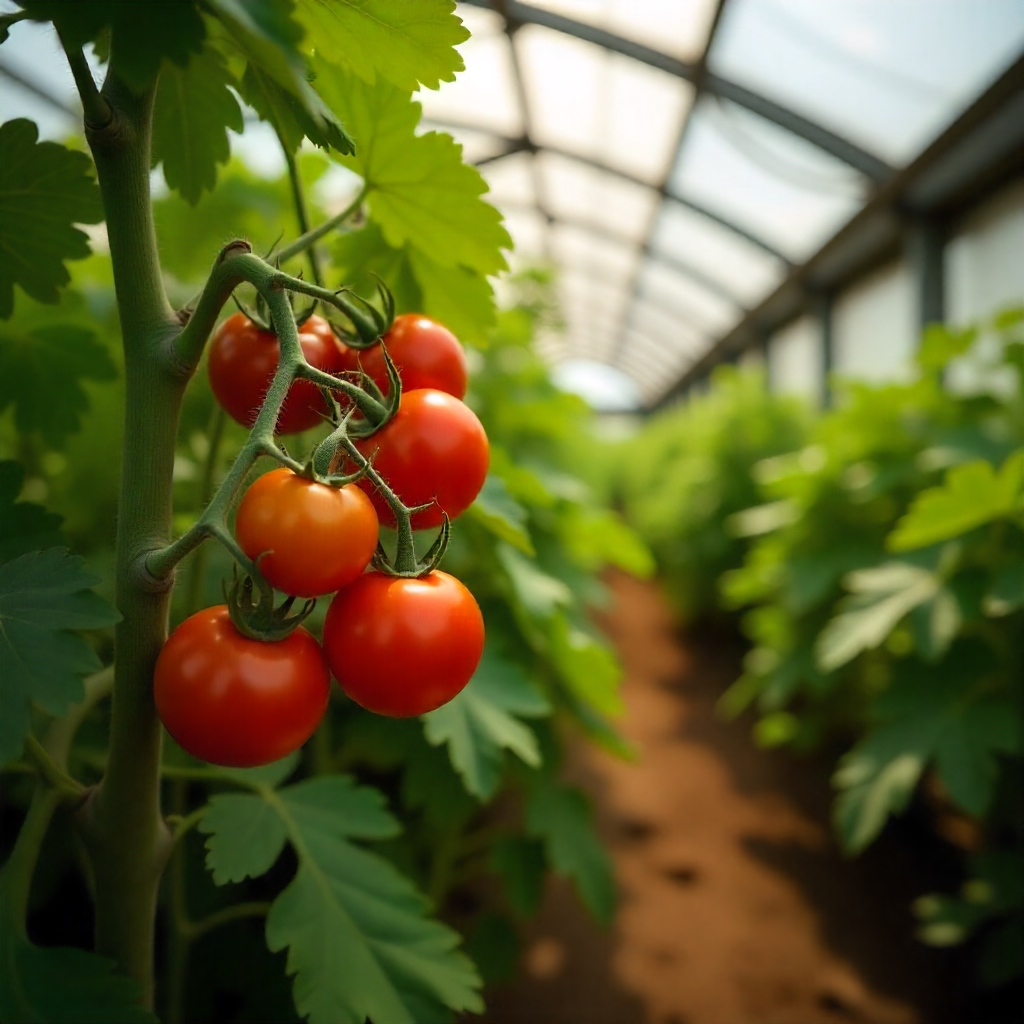
Tomatoes have become absolutely essential to East African cuisine, so thoroughly integrated into daily cooking that they're now indispensable in virtually every main meal across the region, including Kenya, Tanzania, Uganda, Rwanda, Burundi, and Ethiopia. Fresh tomatoes are cultivated extensively throughout East Africa's diverse microclimates, from highland regions to lowland areas, with production occurring year-round though peak seasons during rainy periods bring abundant harvests, lower prices, and superior quality. East African markets are characterized by colorful displays of fresh tomatoes arranged in pyramids by vendors—predominantly women—who expertly sort them by size and ripeness, with customers selecting ripe red tomatoes for immediate cooking, orange ones for use within days, and green tomatoes for longer storage. The foundation of most East African cooking begins with creating a tomato-onion base where chopped tomatoes and onions are sautéed together, often with garlic, ginger, and various spices, forming the aromatic sauce base for virtually all main dishes including bean stews, meat curries, vegetable preparations, and fish dishes that accompany staple foods like ugali (maize porridge), rice, chapati, or matoke (plantains). Kachumbari, the ubiquitous fresh tomato-onion salad seasoned with chili peppers, cilantro, and lemon or lime juice, appears at nearly every East African meal as a refreshing, vitamin-rich accompaniment to grilled meats, stews, and starchy foods, providing cooling contrast and nutritional balance. In Kenya and Tanzania, dishes like mchuzi (curry-style stews), pilau (spiced rice), and nyama choma (grilled meat) all rely heavily on tomatoes for flavor, color, and moisture, while Ugandan cuisine uses tomatoes extensively in groundnut sauces and vegetable preparations. Ethiopian cuisine incorporates tomatoes into various vegetable wats (stews) and uses them fresh in salads called timatim salata, particularly during fasting periods when meat is avoided and vegetable dishes dominate. East Africa has developed tomato processing industries producing paste, canned tomatoes, and sauces that supply urban markets, restaurants, and institutional kitchens, though fresh tomatoes remain overwhelmingly preferred for home cooking where cooks value the control over flavor, consistency, and freshness. Agricultural cooperatives throughout East Africa have embraced improved tomato cultivation techniques including greenhouse farming, drip irrigation, and disease-resistant varieties that increase yields and extend production seasons, with governments promoting tomato cultivation as both a nutrition strategy and income-generation opportunity for smallholder farmers, particularly women who dominate vegetable production and marketing. Urban East Africans consume tomatoes daily in multiple forms—cooked into main dishes, fresh in kachumbari, and increasingly in Western-style preparations like tomato soups, pasta sauces, and sandwiches as cosmopolitan eating habits influence middle-class dietary patterns in cities like Nairobi, Dar es Salaam, and Kampala, where restaurants showcase both traditional tomato-heavy dishes and international cuisines that further demonstrate this vegetable's absolute centrality to regional food culture and nutrition.
Final Thoughts
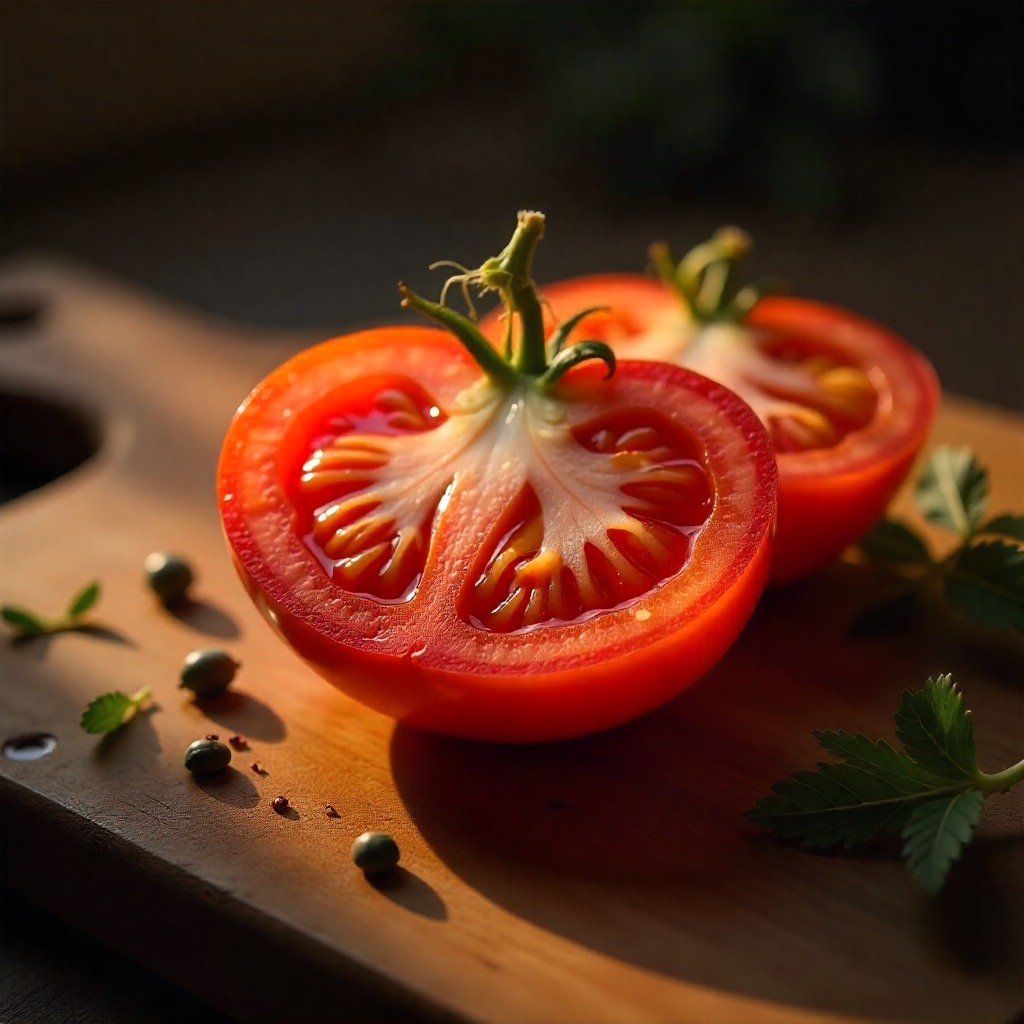
Canada has embraced tomatoes as a dietary staple, consuming them fresh, processed, and in countless prepared foods throughout the year. Fresh tomatoes are available year-round in Canadian supermarkets, with greenhouse-grown varieties from domestic producers like Ontario and British Columbia supplementing imports during winter months. Canadians show strong preference for fresh tomatoes in summer, particularly heirloom varieties and locally grown tomatoes from farmers' markets that offer superior flavor compared to winter imports. Fresh tomato salads, including Caprese salad with mozzarella and basil, are extremely popular in Canadian restaurants and homes, especially during peak summer season. Canadian cuisine reflects the country's multicultural nature in tomato usage—Italian-Canadians prepare traditional marinara and pizza sauces, South Asian Canadians make curry bases with tomatoes, Chinese-Canadians use tomatoes in stir-fries, and Portuguese-Canadians prepare seafood stews rich with tomatoes. Tomato-based soups, particularly tomato soup served with grilled cheese sandwiches, represent classic Canadian comfort food, especially popular during cold winters. Ketchup holds special significance in Canadian culture, with many households maintaining strong brand preferences, and it's consumed in larger quantities per capita than in most countries. Home canning remains a cherished tradition among many Canadian families, particularly those with European heritage, who preserve summer tomato harvests as sauces, whole tomatoes, and salsas for winter use. Urban Canadian gardening enthusiasts prioritize tomatoes as their most desired homegrown crop, with numerous cold-hardy varieties developed specifically for Canada's shorter growing season. Health-conscious Canadians increasingly understand tomatoes' nutritional benefits, particularly lycopene's role in heart and brain health, driving consumption of tomato-based products. Canadian restaurants showcase tomatoes in diverse ways reflecting the country's multiculturalism, from Italian trattorias serving fresh tomato bruschetta to Mexican restaurants preparing fresh salsas daily.


